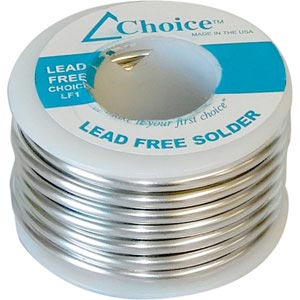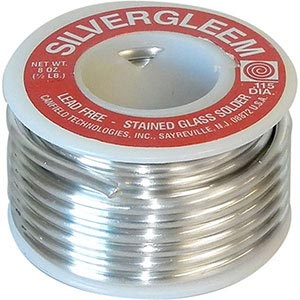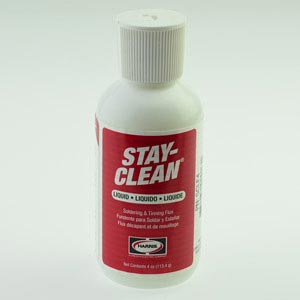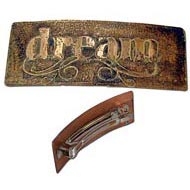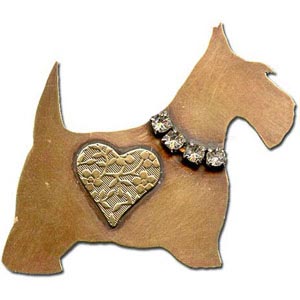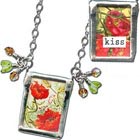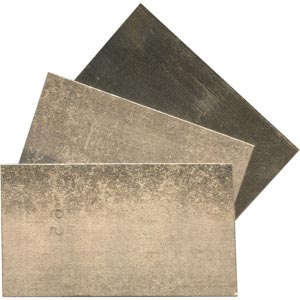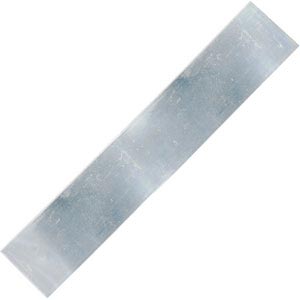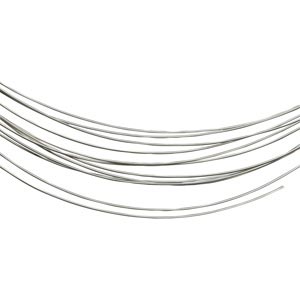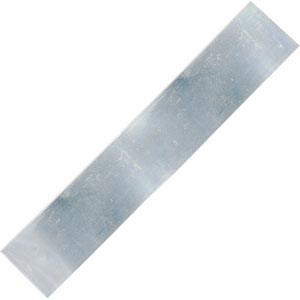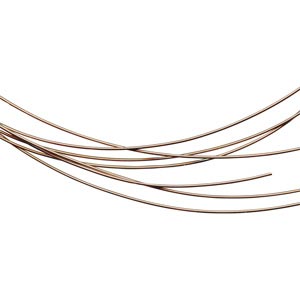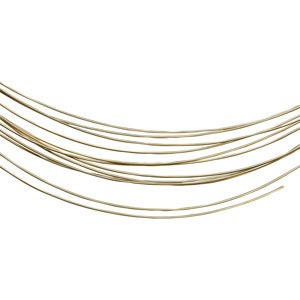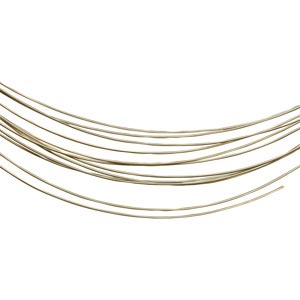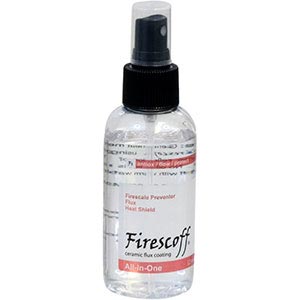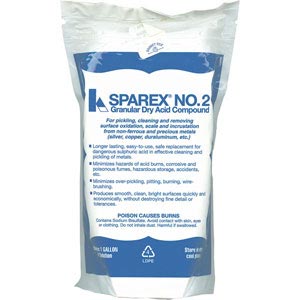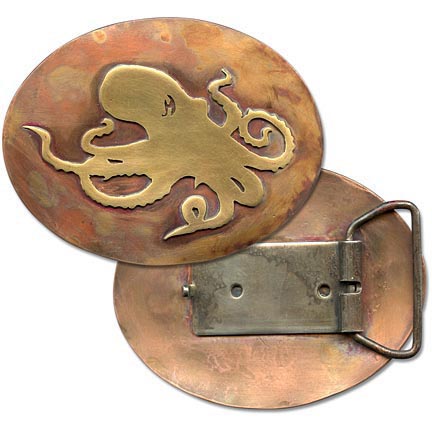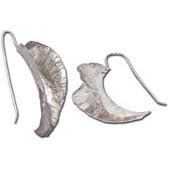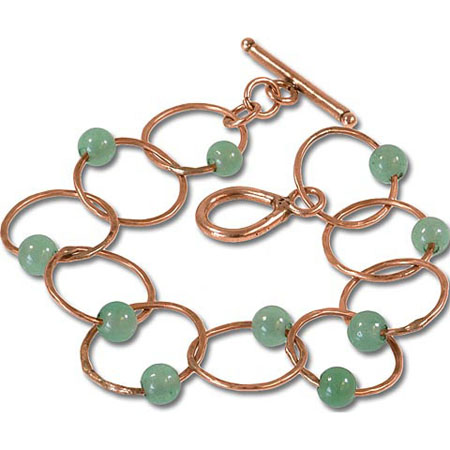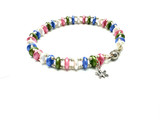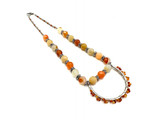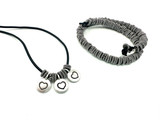Soldering 101
Soldering (usually pronounced soddering) is the method of joining metal parts together, using another metal that has a lower melting temperature than the parts being joined.
- Solder is the portion that melts at a lower temperature.
- Flux is a substance that cleans the metal surfaces to create a stronger bond and help prevent oxidation.
- Most -- but not all! -- soft solders and hard solders require the use of flux.
For details about soft solder vs. hard solder, and which types of flux, torches, soldering irons, etc. work with each type of solder, see below. Rings & Things carries a full line of soldering supplies for both hard solder and soft solder.
Warning: If you use soft solder on sterling silver jewelry, you will not be able to use hard solder on it afterwards. When you heat sterling + soft solder to the flow point of hard solder, the soft solder alloys with the sterling silver and your jewelry melts into a puddle.
What is Soft Solder?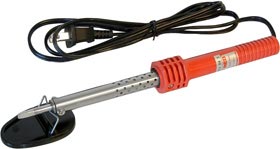 "Soft" solder is a tin-based solder. Because it melts at a low temperature, you can apply soft solder with an electric soldering iron or gun. You might also be able to carefully use a torch with soft solder (it depends on the application). Even though jewelry soft solders are similar to rosin-core tin/lead solders used for electronics and acid-core tin/lead solders used for plumbing, you should not substitute these other solders for jewelry solder. "Soft" solder is a tin-based solder. Because it melts at a low temperature, you can apply soft solder with an electric soldering iron or gun. You might also be able to carefully use a torch with soft solder (it depends on the application). Even though jewelry soft solders are similar to rosin-core tin/lead solders used for electronics and acid-core tin/lead solders used for plumbing, you should not substitute these other solders for jewelry solder. Use soft solder to create custom base-metal jewelry, fuse base-metal components, repair costume jewelry, and solder shut base-metal jump rings. Brass, copper, and bronze components can also be fused together using hard solders (see below). Warning: If you use a tin-based soft solder on a piece of sterling silver jewelry, you will never be able to use a torch or hard solders on it. When you heat silver with soft (tin) solder on it, the tin and silver combine and become a very low-temperature melting alloy. Your piece can be destroyed under heat as the metal melts away from the soft solder patch. We carry the following soft solders and compatible flux: | ||||||||||||||||||
| ||||||||||||||||||
Making Jewelry with Soft SolderHere are just a few examples of how soft solder can expand your jewelry-making options. Click images below for how-to tips, parts lists, and products! | ||||||||||||||||||
| ||||||||||||||||||
What is Hard Solder?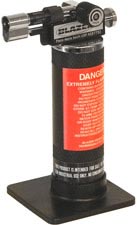 "Hard" solders are alloys that melt at slightly lower temperatures than the corresponding metal pieces to be fused. Silver and gold jewelry require hard soldering. Copper, brass, and bronze components can also be fused with hard solders. In addition to requiring flux, hard solders generally also require the use of pickling solutions to clean and remove surface oxidation from the finished piece. "Hard" solders are alloys that melt at slightly lower temperatures than the corresponding metal pieces to be fused. Silver and gold jewelry require hard soldering. Copper, brass, and bronze components can also be fused with hard solders. In addition to requiring flux, hard solders generally also require the use of pickling solutions to clean and remove surface oxidation from the finished piece. Silver hard solders work for assembling silver jewelry and can also be used to fuse brass and/or copper (as long as you don't mind the joints being a different color). Gold solders are generally used only for making gold jewelry while copper, brass, and bronze solders are typically used to make copper, brass, and bronze jewelry respectively. Metal workers typically use oxy/propane or oxy/acetylene torches with hard solder, but many soldering tasks can also be achieved with butane torches. Use a butane torch to solder jump rings, create ball-end head pins, make custom wire links and chain, create small bezels, fuse together small metal components, etc. Confusion sometimes arises because the lowest-temperature "hard" solder is sometimes called "soft" solder. A better term might be "easy" for the lowest temperature hard solder. Hard solder typically comes in "easy," "medium" and "hard" grades. To create a complex piece, start with hard solder, then fuse the next elements with medium solder. Add the last parts with easy solder. This way, the solder holding the first elements will not flow or move while subsequent parts are assembled. We carry the following hard solders, compatible flux, and pickle: | ||||||||||||||||||
| ||||||||||||||||||
Making Jewelry with Hard SolderClick images below for how-to tips, parts lists, and products to make these designs. | ||||||||||||||||||
| ||||||||||||||||||
Our Bead Blog
-
Simply Springy 2-Hole Bracelet
Apr 28th 2025Designed by: Guest Designer Deb Floros Suggested Supplies 1 #61-840-50-01 Beadalon Cord, WildFire,
-
Exotic Statement Necklace
Apr 28th 2025Designed by: Guest Designer Deb Floros Suggested Supplies 1 #88-400-003-5 58x50mm Pewter Connector,
-
Rubber Tubing Necklace and Memory Wire Bracelet Set
Mar 21st 2025Designed by: Guest Designer Deb Floros Suggested Supplies 1 #61-622-02 2mm Rubber Cord, Bulk, for J


